/dense_connective_tissue-56a09aee3df78cafdaa32ca1.jpg)
Connective Tissue Types and Examples
Dense connective tissue proper is composed of a higher density of fibers, which may be regular (with parallel fibers such as that of tendons and ligaments) or irregular (with multidirectional fibers such as that of the pericardium), or elastic (with significant embedded elastin such as that of arteries)..
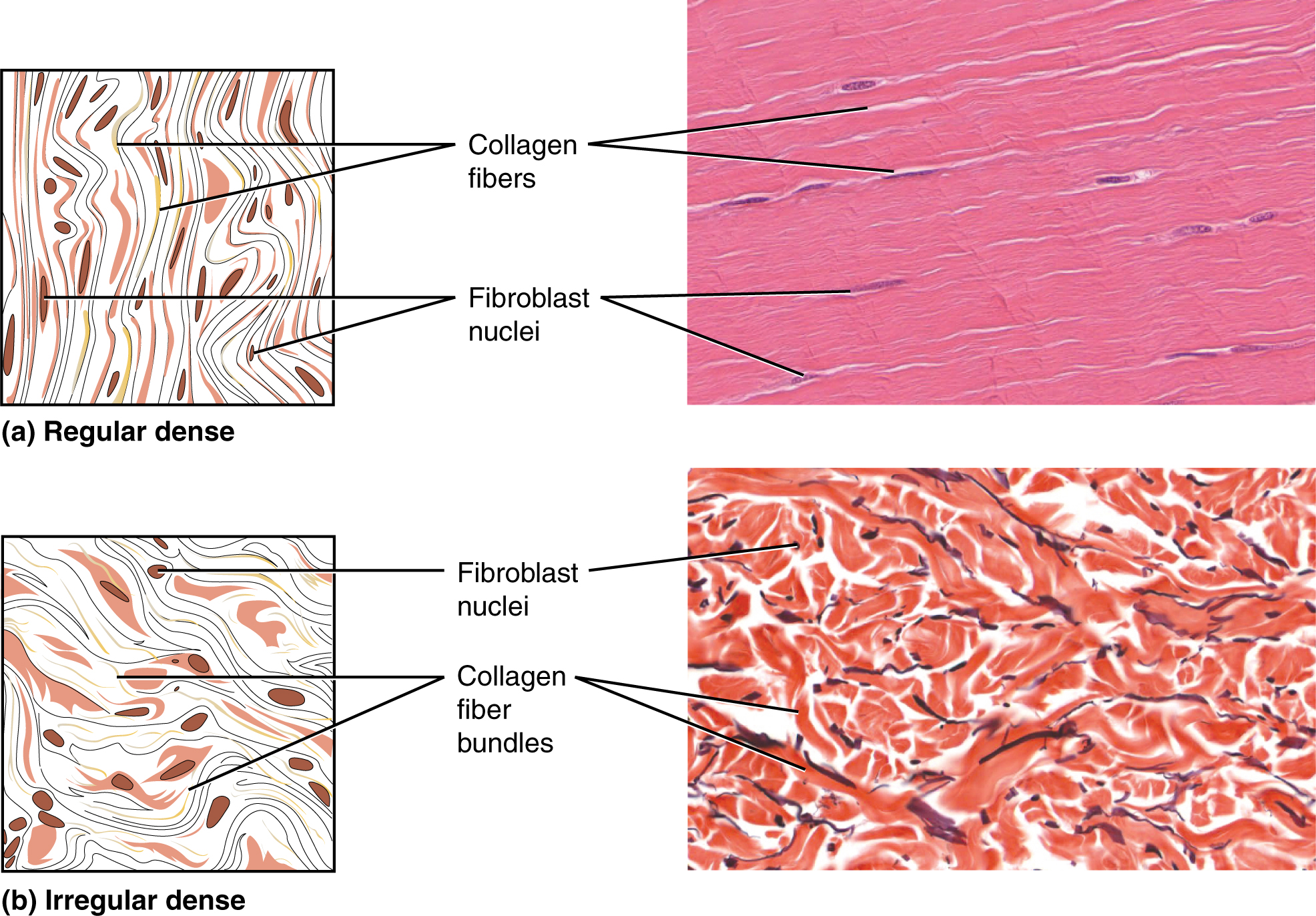
Connective Tissue Supports and Protects · Anatomy and Physiology
In dense irregular connective tissue, the arrangement of proteins fibers is irregular and lacks the uniformity seen in dense regular . This arrangement gives the tissue greater strength in all directions and less strength in any one particular direction. In some tissues, fibers crisscross and form a mesh.
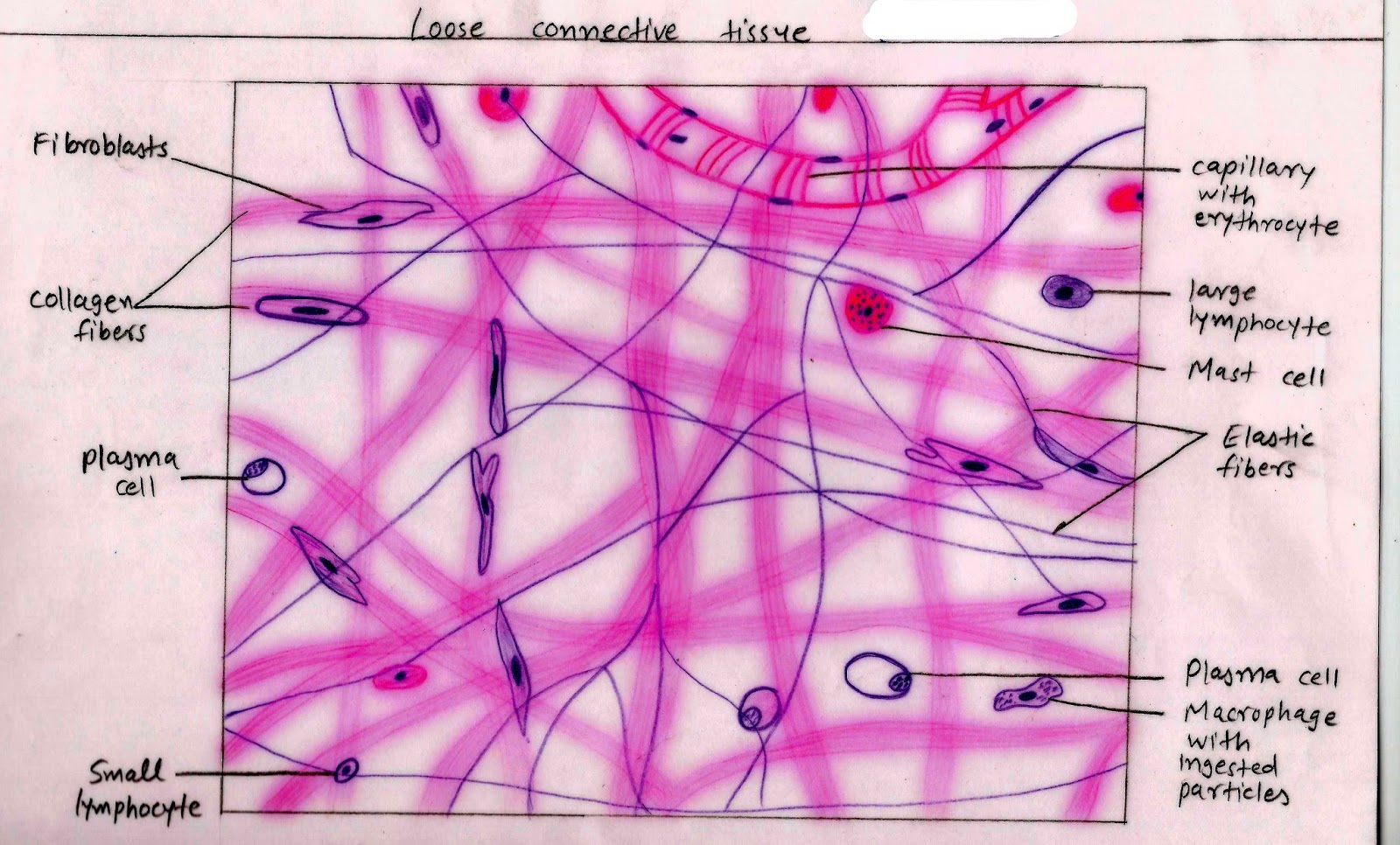
Histology Image Connective tissue
Dense irregular connective tissue is a type of connective tissue proper with a matrix containing densely packed interwoven collagen fibers that fill most of the extracellular space and a thick jellylike ground substance comprising the remainder of the matrix.
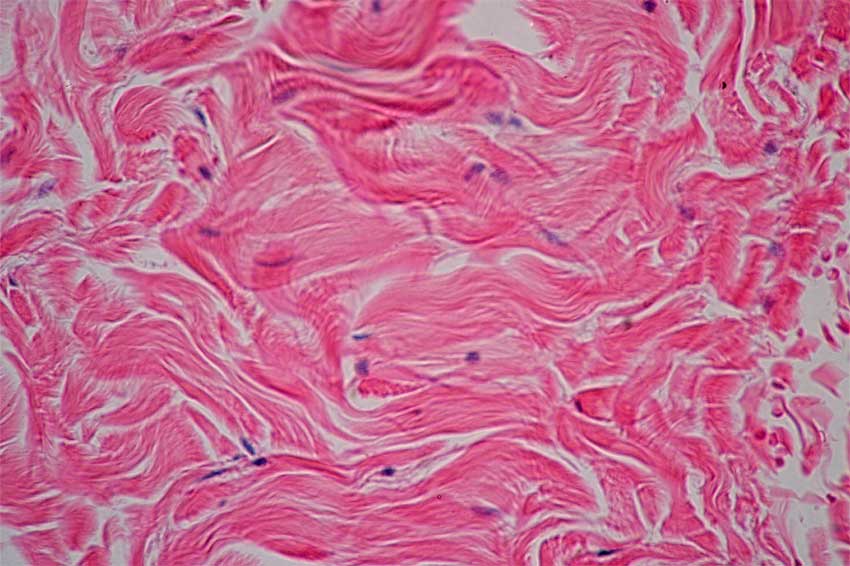
Dense Irregular Connective Tisse
Each muscle is wrapped in a sheath of dense, irregular connective tissue called the epimysium, which allows a muscle to contract and move powerfully while maintaining its structural integrity. The epimysium also separates muscle from other tissues and organs in the area, allowing the muscle to move independently.
:max_bytes(150000):strip_icc()/dense_irregular_conn_tissue-5b68c5db46e0fb0050b3a01b.jpg)
Connective Tissue Types and Examples
dense irregular connective tissue - found in lower layers of the skin and in the protective white layer of the eyeball; The main difference between the two forms is the arrangement of the fiber component. In dense regular connective tissue, the fibers are arranged in parallel bundles whereas those in dense irregular connective tissue are not.

dense irregular connective tissue labeled Google Search Anatomy Class Help Pinterest Med
The irregular type, as the name implies, is a kind of dense connective tissue in which the extracellular fibers (especially, collagen fibers) are variably arranged in contrast to the dense regular connective tissue that has fibers arranged in a regular fashion (i.e, in parallel bundles).

Dense Irregular Connective Tissue 2 (Medium) ChangGp Flickr
Dense regular connective tissues are connective tissues of a group or bundle of dense, robust, and large collagen fibers that hold the tissue and provide strength to it. Characteristically, in the dense regular tissue the collagen fibers are arranged loosely but in a parallel fashion.
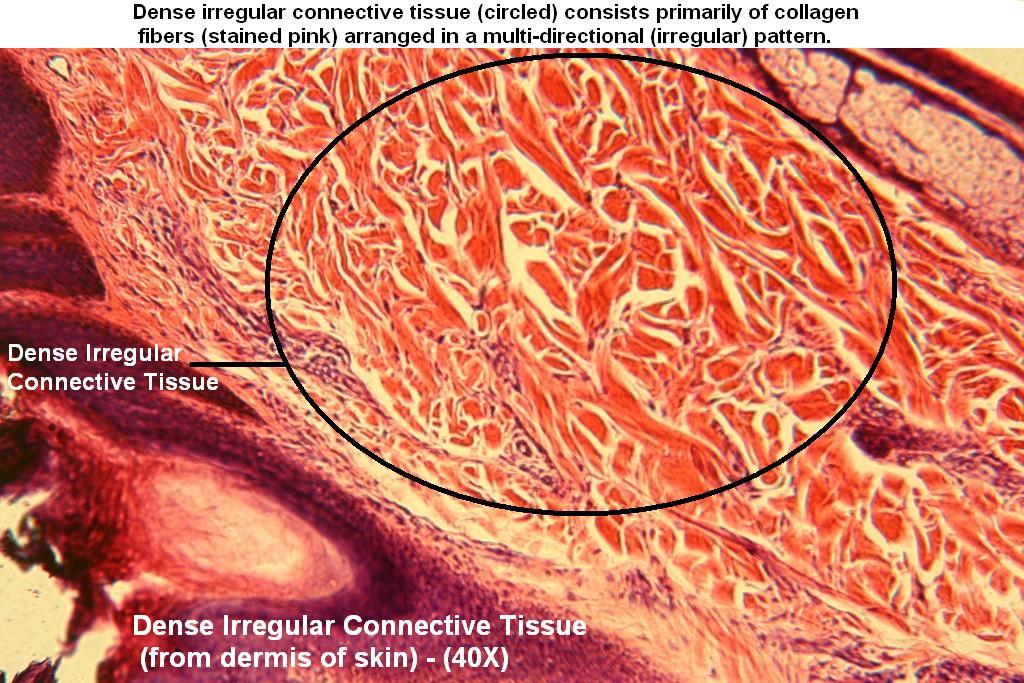
Dense Irregular Tutorial Histology Atlas for Anatomy and Physiology
The cellular layer is adjacent to the cortical bone and is covered by an outer fibrous layer of dense irregular connective tissue (see Figure 6.3.4a). The periosteum also contains blood vessels, nerves, and lymphatic vessels that nourish compact bone.. Bone Matrix Osseous tissue is a connective tissue and like all connective tissues contains.

The reticular dermis is a dense irregular connective tissue with fibroblasts and densely packed
Figure 5.2 Layers of Skin The skin is composed of two main layers: the epidermis, made of closely packed epithelial cells, and the dermis, made of dense, irregular connective tissue that houses blood vessels, hair follicles, sweat glands, and other structures.
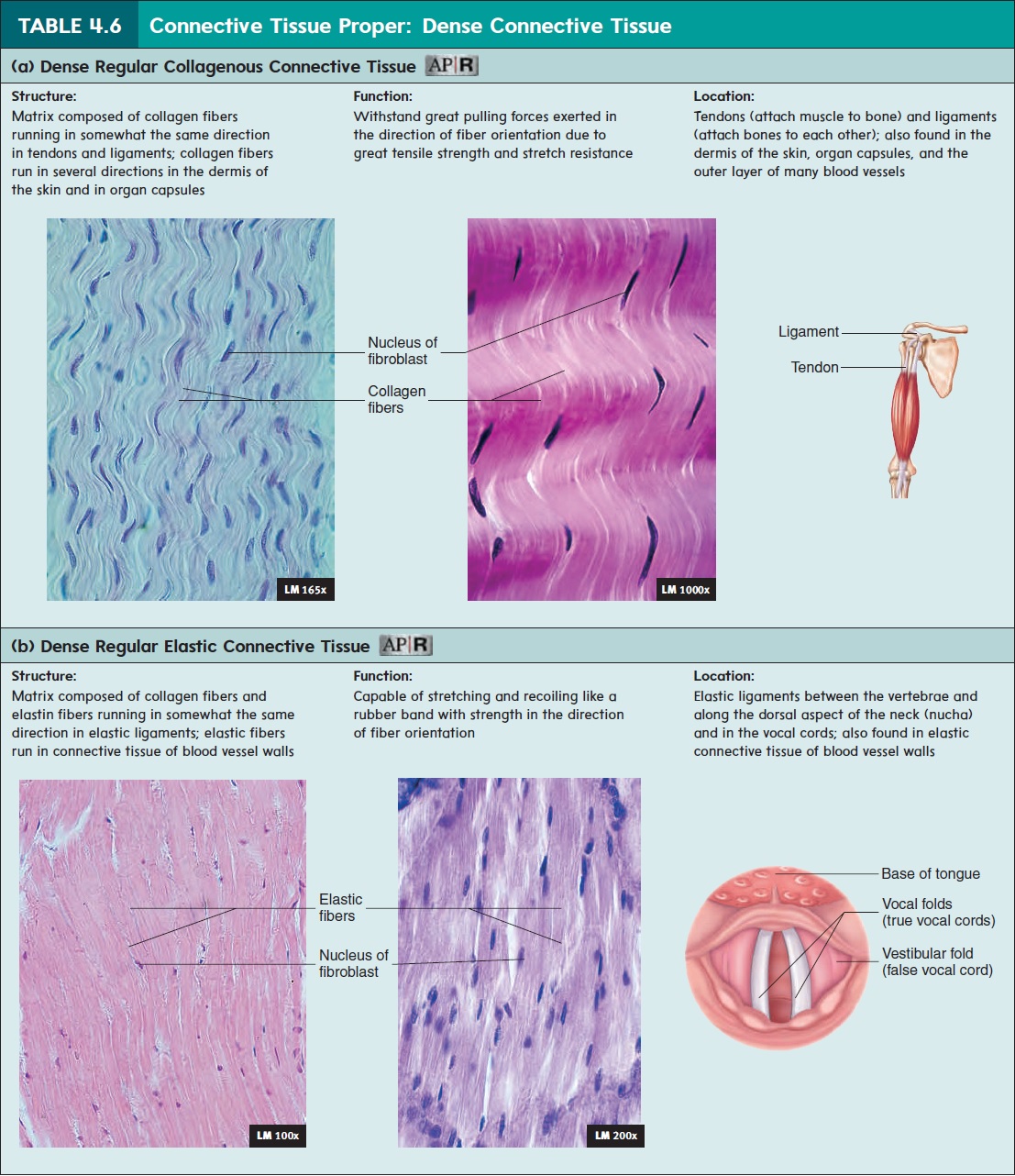
Connective tissue
Dense connective tissue is reinforced by bundles of fibers that provide tensile strength, elasticity, and protection. In loose connective tissue, the fibers are loosely organized, leaving large spaces in between. Supportive connective tissue —bone and cartilage—provide structure and strength to the body and protect soft tissues.
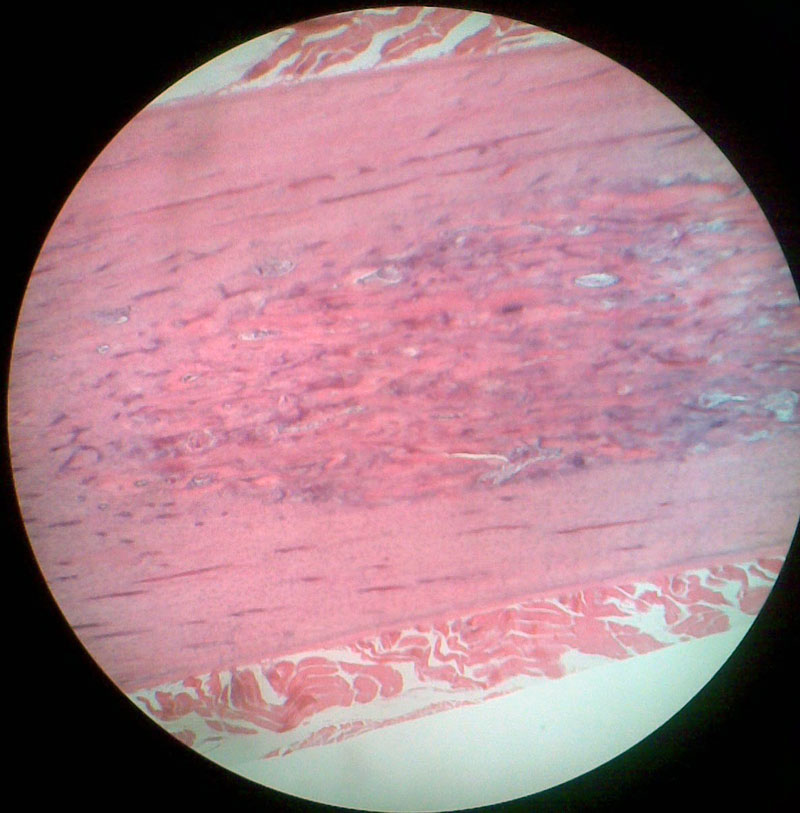
Dense Irregular Connective Tissue howMed Images
Dense connective tissue helps attach muscles to bones and link bones together at joints. Specialized connective tissue encompasses a number of different tissues with specialized cells and unique ground substances. Some are solid and strong, while others are fluid and flexible. Examples include adipose, cartilage, bone, blood, and lymph.

Dense Irregular Connective Tissue Death of an Astronaut
In dense irregular connective tissue, the direction of fibers is random. This arrangement gives the tissue greater strength in all directions and less strength in one particular direction. In some tissues, fibers crisscross and form a mesh. In other tissues, stretching in several directions is achieved by alternating layers where fibers run in.

Tissue Identification Flashcards Easy Notecards
Dense regular collagenous connective tissue 1/4 Synonyms: none Connective tissue is the tissue that connects or separates, and supports all the other types of tissues in the body. Like all tissue types, it consists of cells surrounded by a compartment of fluid called the extracellular matrix (ECM).

Dense irregular connective tissue Wikipedia
Dense irregular connective tissue has fibers that are not arranged in parallel bundles as in dense regular connective tissue . Dense irregular connective tissue consists of mostly collagen fibers. It has less ground substance than loose connective tissue. [1] Fibroblasts are the predominant cell type, scattered sparsely across the tissue. [2]

Dense Irregular Connective Tissue Human Body Help
Dense connective tissue is a type of connective tissue that can be further split into dense regular connective tissue and dense irregular connective tissue. Dense regular connective tissue comprises structures such as ligaments, tendons and aponeuroses, whilst dense irregular tissue is more widely distributed throughout the body.

Dense Irregular Connective Tissue Diagram Quizlet
Loose and Dense Irregular Connective Tissue. Non-specialized or general connective tissue, sometimes called connective tissue proper, is subdivided into two groups: loose and dense. The lamina propria of this fallopian tube is pale pink. Loose regular tissue has a fluid matrix and low proportions of arranged (regular) fibers.